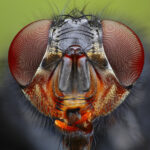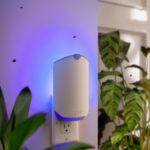Dealing with flies in your yard can be incredibly frustrating. These persistent pests are not only annoying, buzzing around and landing on everything, but they can also be vectors for disease and create unsanitary conditions. If you’re wondering how to effectively manage and kill flies in your yard, you’re not alone. While there’s no single magic bullet, a combination of strategies focusing on sanitation, traps, and targeted treatments can significantly reduce fly populations and make your outdoor spaces more enjoyable.
To effectively control flies outdoors, a multi-faceted approach is essential. Here’s a breakdown of methods you can employ to tackle your fly problem:
Effective Strategies to Eliminate Flies in Your Yard
Utilize Fly Traps
Fly traps are a practical first step in reducing the fly population in your yard. These traps work by luring flies in with bait and preventing their escape. There are various types available, each with its own advantages:
- Bait Traps: These traps, like the Flies Be Gone Fly Trap, use a potent attractant to lure flies into a container from which they cannot exit. These are often disposable, making cleanup easy.
- Reusable Traps: The Advantage Fly Trap is an example of a reusable option. These traps can be cleaned and refilled with attractant, making them a more sustainable choice in the long run.
Alt: A fly trap hanging in a backyard, effectively capturing flies.
Placement is key for fly traps. Position them strategically in areas where flies are most prevalent, such as near trash cans, pet areas, or outdoor eating spaces, but away from where people and pets frequently gather to minimize attracting flies to those zones.
Emphasize Sanitation Practices
Sanitation is paramount when it comes to long-term fly control, especially in outdoor environments where pets are present. Flies breed in decaying organic matter, making proper waste management crucial.
- Pet Waste Removal: Promptly remove dog poop and other pet waste from your yard. Dispose of it in sealed trash bags, even when placed inside trash cans, to prevent flies from accessing breeding grounds.
- Trash Management: Ensure all trash cans, both indoors and outdoors, have tightly fitting lids. Regularly clean trash cans to eliminate odors and residue that attract flies. Consider using trash bags inside cans to further contain waste and reduce fly attractants.
By eliminating breeding sites, you disrupt the fly life cycle and prevent future generations from infesting your yard.
Cleaning with Bleach or Ammonia Solutions
For kennels, patios, and other hard surfaces in your yard, cleaning with bleach or ammonia solutions can be an effective way to kill fly larvae and eliminate attractants.
- Bleach Solution: A diluted bleach solution can be used to hose down sidewalks, kennels, trash can areas, and other non-plant surfaces. Bleach is a powerful disinfectant that kills fly eggs and larvae and helps to eliminate odors that attract flies.
- Ammonia Solution: In areas where bleach is not suitable, such as around turf grass, a diluted ammonia solution can be used. Ammonia, in small concentrations, can also act as a fertilizer, potentially greening up your lawn while helping to control flies. However, use ammonia with caution, as excessive amounts can harm plants, similar to over-fertilizing. A general guideline is to use 1-2 ounces per gallon of water in a hose-end sprayer, adjusting as needed and avoiding over-application.
Alt: Person using a hose to spray and clean a patio area in a yard, controlling flies through sanitation.
Always test cleaning solutions in an inconspicuous area first to ensure they do not damage surfaces or plants. Exercise caution when using bleach and ammonia, wearing gloves and eye protection, and avoid mixing them as they can create hazardous fumes.
Regular Insecticide Application
For persistent fly problems, periodic application of a quality insecticide can provide an additional layer of control.
- Insecticide Sprays: Products containing active ingredients like Bifenthrin (e.g., Bifen I/T) are effective for outdoor fly control. Apply these insecticides to areas where flies congregate, such as trash cans (inside and out), lawns, around foundations, and other outdoor surfaces.
- Careful Application: When using insecticides, always follow the manufacturer’s instructions carefully. Avoid spraying directly on pets or allowing them into treated areas until the insecticide has dried completely. Be mindful of beneficial insects and pollinators when applying insecticides, and consider targeted applications to minimize non-target effects.
Alt: Applying insecticide spray around trash cans in a yard to manage fly populations.
Considerations for Fly Baits
While fly baits can be effective in some settings, they are generally not recommended for broad outdoor fly control in yards, especially where pets are present.
- Toxicity to Pets: Most scatter-type fly baits are highly toxic if ingested by pets. Therefore, their use in yards with animals is generally discouraged due to the risk of accidental poisoning.
- Limited Outdoor Effectiveness: Fly bait systems are often more effective in enclosed or semi-enclosed spaces. In open yard environments, their reach and effectiveness may be limited compared to traps, sanitation, and sprays.
Conclusion: Consistent Effort for Fly Control
Effectively killing and controlling flies in your yard requires a consistent and diligent approach. There are no quick fixes, but by combining fly traps, rigorous sanitation practices, targeted cleaning with bleach or ammonia solutions, and periodic insecticide applications, you can significantly reduce fly populations and enjoy a more pleasant, fly-free outdoor environment. Remember that persistence and thoroughness are key to successful fly management in your yard.

